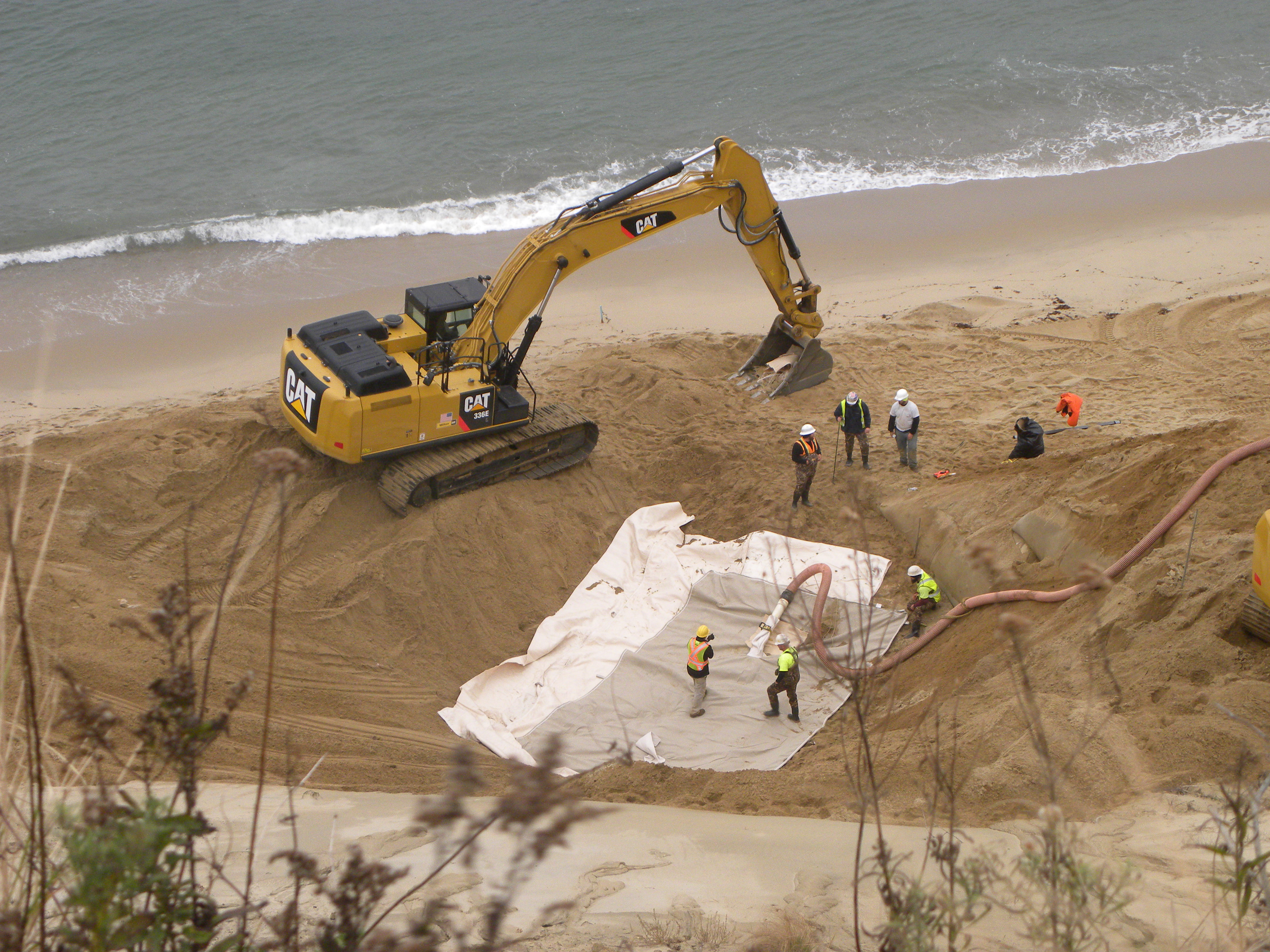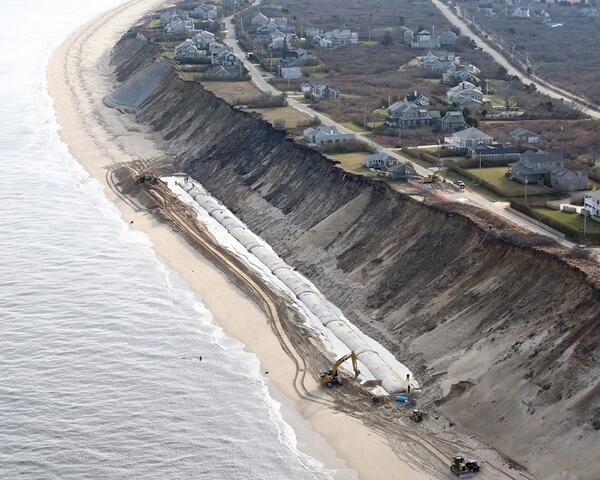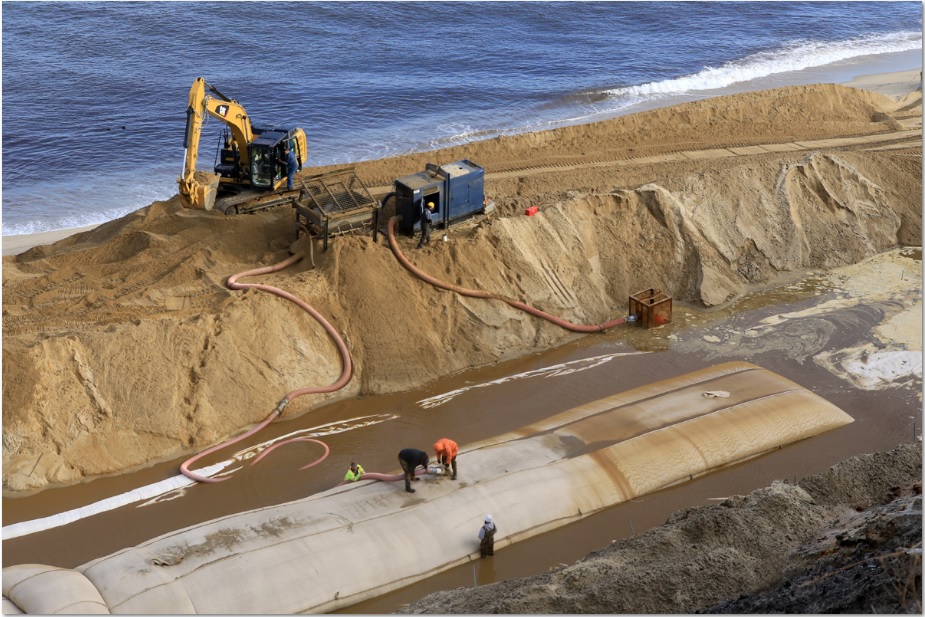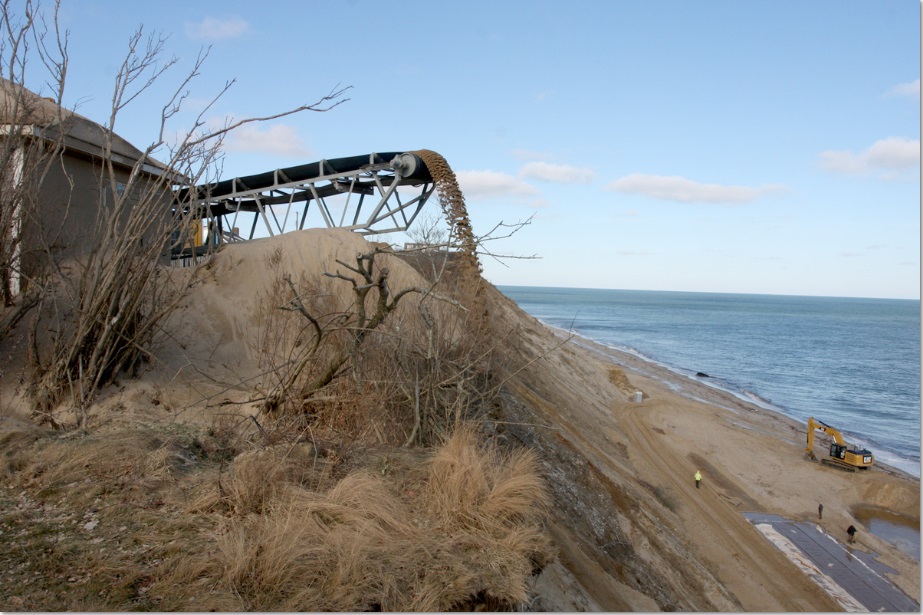Solution
Consistent with our goals, SBPF partnered with the town of Nantucket to implement erosion control efforts in the winter of 2013-2014 and since that has increased the number of geotube layers from 3 to 4, planted vegetation and installed a drainage system to limit the impact of surface runoff and delivered thousands of dump truck loads of sand to assure that there is no negative impact on surrounding beaches. (For more detail, see TIMELINE). Ultimately, SBPF would like to extend this approach to protecting the entire bluff from the end of Baxter Road at the Sankaty Lighthouse property to the point at which erosion has begun (with bank erosion beginning at around 63 Baxter Road and dune erosion occurring farther south around 53 Baxter Road).
AUDIO TOUR
Listen to our Audio Tour, highlighting the major aspects of the erosion control project at Sconset Bluff, by calling 508-443-6443.






